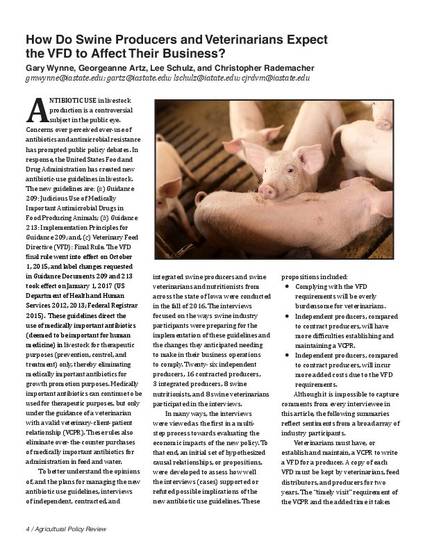
ANTIBIOTIC USE in livestock production is a controversial subject in the public eye. Concerns over perceived over-use of antibiotics and antimicrobial resistance has prompted public policy debates. In response, the United States Food and Drug Administration has created new antibiotic-use guidelines in livestock. The new guidelines are: ( a ) Guidance 209: Judicious Use of Medically Important Antimicrobial Drugs in Food Producing Animals; ( b ) Guidance 213: Implementation Principles for Guidance 209; and, ( c ) Veterinary Feed Directive (VFD): Final Rule. The VFD fina l rule went into effect on October 1, 2015, and label changes requested in Guidance Documents 209 and 213 took effect on January 1, 2017 (US Department of Health and Human Services 2012, 2013; Federal Registrar 2015). These guidelines direct the use of medically important antibiotics (deemed to be important for human medicine) in livestock for therapeutic purposes (prevention, control, and treatment) only, thereby eliminating medically important antibiotics for growth promotion purposes. Medically important antibiotics can continue to be used for therapeutic purposes, but only under the guidance of a veterinarian with a valid veterinary-client-patient relationship (VCPR). These rules also eliminate over-the-counter purchases of medically important antibiotics for administration in feed and water.
Available at: http://works.bepress.com/georgeanne-artz/47/
